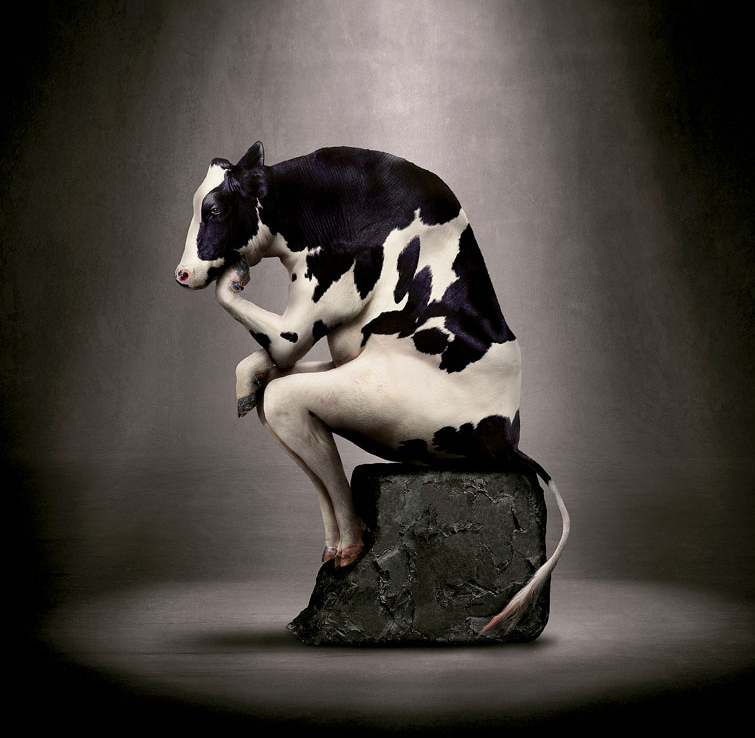If you’ve read On Pasture for very long, you know that before I created On Pasture, I was best known for creating a method for teaching cows (or any other ruminant) to eat weeds. Starting in 2004, I developed steps that anyone could use, testing them and then refining, until the process only took 8 hours spread over 7 days. I taught over 1,000 cows, flocks of sheep, some goats, and even some of Ted Turner’s bison to eat weeds. Along the way I learned that weeds are often more nutritious than grass, even the equivalent of alfalfa and that weed-eating cows gained more weight than non-weed-eating. I learned that cows did every bit as well on brush as the herd of goats I’d managed specifically to graze brush and reduce fire danger. And I learned that in spite of the ease of training animals, and that graziers with weed-eaters would automatically have 43% more forage, most folks were still fixated on grass as the only suitable forage for cows.
So I asked myself, “Did we always believe that cows only eat grass?”
To find out, I searched through agricultural publications from 1795 to 1850. And here’s what I found folks fed their livestock back then – before mechanization made it easy to store hay:

Those two fellows are holding mangelwurzels – giant turnips. Along with those, and a little hay, livestock survived by eating other turnips, carrots, potatoes and beans. I even found an 1850 feed trial where scientists asked the question, “Do livestock gain more weight on steamed or raw veggies?” The answer: steamed, and they prefer them salted.
What this told me, along with all my experience watching cows eat weeds (often choosing weeds over grass) fit perfectly with what Dr. Fred Provenza has said over and over. Animal diets are flexible, and they eat what they learn to eat. We reduced their diets to primarily grass by focusing on feeding them that. It’s all they learn.
I’m thinking about this today because of two of this week’s articles in particular. One is from Austin Unruh on how to use trees as forage. With 12-16% protein, they’re good for livestock and so considering them as forage is a good thing. The other article is from John Marble who provides a great example of how important flexibility is when it comes to how we manage our livestock and our grazing resources. He’s made it through a drought, followed by too much rain, followed by a fire.
I hope these stories help you to think about where you can stretch a little. And to help you with that, we’ve got info on a Meat School, how to choose your replacement heifers, and a great grazing systems planning guide.
Thanks for reading!
Kathy





Is there any advantage to burning a pasture seeded with 15lbs of Timothy per acre and harvesting the hay in it’s first season? I know it should put Nitrogen back into the ground but what will it do to the Timothy and it’s regrowth in second year?
Comments are closed.